
Journal of Paleolithic Archaeology
Scope & Guideline
Illuminating the Path of Human Evolution
Introduction
Aims and Scopes
- Technological Innovations in Stone Tools:
The journal emphasizes research that explores technological advancements in stone tool production and usage, highlighting how these innovations reflect the cognitive and cultural evolution of early humans. - Cave Art and Symbolism:
There is a strong focus on the study of Paleolithic cave art, examining its significance in understanding the symbolic thought processes of early hominins and their cultural expressions. - Subsistence Strategies and Human Behavior:
Research on subsistence strategies, including hunting, gathering, and resource use, is a core area, providing insights into the daily lives and survival tactics of Paleolithic peoples. - Site Formation Processes and Archaeological Context:
The journal places importance on understanding site formation processes, which aid in reconstructing past human activities and environmental interactions, enhancing archaeological interpretations. - Interdisciplinary Approaches:
The journal encourages interdisciplinary research that combines archaeological findings with insights from geology, biology, and anthropology to deepen the understanding of human evolution and adaptation.
Trending and Emerging
- Advanced Lithic Analysis Techniques:
There is an increasing focus on innovative analytical techniques, such as 3D geometric morphometrics and experimental archaeology, which enhance the understanding of lithic technology and its implications for human behavior. - Cultural Dynamics and Interactions:
Research exploring the cultural dynamics between different groups, particularly during transitions like the Middle to Upper Paleolithic, has gained prominence, highlighting the complexities of human interactions and migrations. - Environmental and Ecological Influences:
Emerging studies examine the impact of environmental changes on human behavior and settlement patterns, emphasizing the relationship between climate, ecology, and cultural adaptations. - Integration of Bioarchaeology and Zooarchaeology:
There is a notable trend towards integrating bioarchaeological data with zooarchaeological findings to provide a more comprehensive view of human subsistence and health during the Paleolithic. - Focus on Underrepresented Regions:
An emerging interest in less-studied regions, such as Southeast Asia and parts of Africa, is becoming evident, aiming to broaden the understanding of human evolution and cultural diversity.
Declining or Waning
- Traditional Typological Studies:
Research focused solely on traditional typological classifications of artifacts has seen a decline, as the journal shifts towards more dynamic analyses that consider technological processes and cultural contexts. - Regional Studies with Limited Scope:
Papers focusing narrowly on specific regions without broader implications or connections to global patterns have decreased, reflecting a trend towards more integrative studies that link local findings to wider archaeological narratives. - Descriptive Analyses Without Theoretical Frameworks:
There is a waning interest in purely descriptive analyses that lack theoretical engagement. The journal now favors studies that incorporate theoretical frameworks to interpret archaeological data meaningfully.
Similar Journals

ARCHAEOLOGY
Unearthing Insights, Shaping UnderstandingARCHAEOLOGY is a distinguished peer-reviewed journal published by the Archaeological Institute of America, focusing on the multifaceted aspects of archaeological research and its relevance to contemporary society. Established in 1966, this journal serves as a critical platform for scholarly discourse in the field, showcasing innovative findings, theoretical advancements, and methodological discussions related to archaeology. While it maintains a Q4 ranking within the disciplines of archaeology and arts and humanities, its contributions remain valuable for those engaging in archaeological studies or seeking to understand historical and cultural narratives. The journal is accessible in print, with an ISSN of 0003-8113 and an E-ISSN of 1943-5746, ensuring that a wide audience can benefit from its insights. Although currently not classified as Open Access, the meticulous peer-review process ensures a high standard of academic rigor, making it an essential source for researchers, professionals, and students alike who are dedicated to exploring the past through archaeological lenses.

Archaeological and Anthropological Sciences
Pioneering Interdisciplinary Dialogues in Archaeology and AnthropologyArchaeological and Anthropological Sciences is an esteemed peer-reviewed journal published by Springer Heidelberg, specializing in the interdisciplinary fields of archaeology and anthropology. Since its inception in 2009, this journal has established itself as a pivotal resource for researchers and professionals, featuring cutting-edge studies that bridge the gap between the sciences and humanities. With its impressive 2023 Q1 rankings in Anthropology and Archaeology categories, the journal stands out in the Scopus landscape, ranking within the top 5% of its field—Rank #18/413 in Archaeology (Arts and Humanities) and Rank #28/502 in Anthropology. This is complemented by its commitment to disseminating high-quality research to a global audience, despite being a non-Open Access publication. The journal's scope encompasses innovative methodologies, archaeological findings, and anthropological insights that are vital for advancing knowledge and fostering academic discourse. As it moves toward its upcoming converged years, Archaeological and Anthropological Sciences continues to solidify its reputation as a key forum for scholarly exchange in these fields.

ANTIQUITY
Pioneering Discoveries in the Study of AntiquityANTIQUITY is a prestigious academic journal published by Cambridge University Press that has been at the forefront of archaeological and humanities scholarship since its inception in 1927. With its roots firmly planted in the United Kingdom, the journal has achieved remarkable recognition, maintaining a Q1 ranking in both the fields of Archaeology and Arts and Humanities as of 2023. With an impressive Scopus ranking of #3 out of 173 in General Arts and Humanities and #28 out of 354 in Archaeology, it underscores its significant impact and influence in shaping contemporary discourse in these domains. Although it is not an Open Access journal, ANTIQUITY provides crucial insights into the evolution of human societies through a comprehensive range of archaeological studies, reviews, and theoretical discussions. By facilitating knowledge exchange among researchers, professionals, and students, ANTIQUITY not only enriches academic literature but also fosters a deeper understanding of our past.
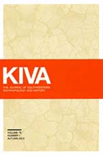
Kiva-Journal of Southwestern Anthropology and History
Celebrating the Legacy of Southwestern CulturesKiva - Journal of Southwestern Anthropology and History is a distinguished academic journal published by Routledge Journals, Taylor & Francis Ltd, that serves as a vital resource for scholars in the fields of anthropology, archaeology, and history. With an ISSN of 0023-1940 and an E-ISSN of 2051-6177, this journal has established itself as a significant avenue for scholarly communication since its inception in 1964. It consistently ranks in the top quartiles, including Q1 in Archaeology and Q2 in Anthropology, reflecting its high impact and rigorous peer-review process. Covering a wide array of topics pertinent to the Southwestern United States, Kiva invites original research articles, reviews, and methodological papers that advance understanding of the region's rich cultural heritage and historical narratives. While currently not open access, its commitment to disseminating quality research makes it an essential reading for researchers, professionals, and students aiming to explore the multifaceted dimensions of southwestern studies.
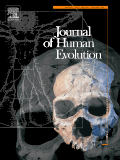
JOURNAL OF HUMAN EVOLUTION
Pioneering Research in Anthropology and EvolutionThe JOURNAL OF HUMAN EVOLUTION, published by ACADEMIC PRESS LTD - ELSEVIER SCIENCE LTD, is a premier academic journal focusing on the evolutionary biology of humans and their ancestors. With an esteemed Q1 ranking in the fields of Anthropology and Ecology, Evolution, Behavior and Systematics, this journal is a vital resource for researchers, professionals, and students dedicated to understanding human origins and evolutionary processes. The journal has been steadfastly contributing to the field since 1972, converging knowledge and insights through meticulously peer-reviewed articles. Additionally, it holds an impressive Scopus rank of #12/502 in Anthropology and #105/721 in Ecology, underlining its significant impact and prestige within the academic community. While the journal is not open access, its content remains accessible to those within institutional affiliations, fostering an environment rich in scholarly exchange and innovation. By disseminating cutting-edge research and comprehensive reviews, the JOURNAL OF HUMAN EVOLUTION continues to illuminate the complex narrative of human evolution and is essential reading for anyone engaged in this dynamic field.
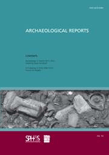
Archaeological Reports-London
Connecting the Dots of Civilization's TapestryArchaeological Reports-London, published by Cambridge University Press, is a prominent journal dedicated to advancing the field of archaeology, encompassing a comprehensive range of studies that delve into the rich tapestry of human history from prehistory to modern times. With an ISSN of 0570-6084 and an E-ISSN of 2041-4102, this journal has been a significant source of scholarly articles since its inception in 1955, serving as a crucial platform for researchers and academics alike. The journal is categorized in the third quartile for Archaeology and Arts and Humanities, and holds a prestigious position in the first quartile for Classics, reflecting its vital role in the scholarly community. With its esteemed ranking of Rank #45/170 in Classics and Rank #210/413 in Archaeology, it provides unparalleled insights and findings that shape contemporary archaeological discourse. Although not an open-access publication, the journal remains key for those who seek to enrich their understanding of archaeological practices and heritage conservation. Engage with Archaeological Reports-London to explore cutting-edge research that illuminates our understanding of past civilizations and informs future directions in the field.
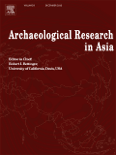
Archaeological Research in Asia
Diving Deep into Asia's Archaeological Narratives.Archaeological Research in Asia is a leading academic journal published by Elsevier Science Ltd, dedicated to advancing the understanding of archaeological practice, theory, and interpretations within the Asian context. Since its inception in 2015, the journal has emerged as a cornerstone in the field, holding a prestigious Q1 category status in both Archaeology and Arts and Humanities according to the latest evaluations in 2023. With its remarkable Scopus rankings, placing it at #45 out of 413 in the Arts and Humanities and #45 out of 354 in the Social Sciences, this journal offers a rich platform for the dissemination of original research articles, case studies, and scholarly reviews. Targeting archaeologists, historians, and cultural heritage professionals, the journal aims to facilitate meaningful dialogue and collaboration across disciplines. Although it does not currently operate on an open access model, the journal's commitment to high-quality scholarly discourse ensures that it remains a vital resource for those engaged in the intricacies of Asian archaeology.
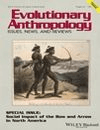
EVOLUTIONARY ANTHROPOLOGY
Advancing the Frontiers of Human EvolutionEVOLUTIONARY ANTHROPOLOGY is a premier journal published by WILEY, dedicated to advancing the field of anthropology through innovative and rigorous research. With an ISSN of 1060-1538 and an E-ISSN of 1520-6505, this journal boasts a remarkable Q1 ranking in both the Anthropology and Medicine (miscellaneous) categories, reflecting its significant impact within the academic community. Since its inception in 1992, it has continuously evolved, now encompassing a wide array of subjects pertinent to evolutionary studies and human health. Residing in the highly competitive Scopus rankings, it stands at an impressive rank of 10 out of 502 in the field, placing it within the top 2% of journals in Social Sciences - Anthropology. Researchers, professionals, and students alike will find this journal an invaluable resource for the latest findings, theoretical advancements, and discussions that shape our understanding of human evolution and its biological implications. While not categorized as an Open Access journal, EVOLUTIONARY ANTHROPOLOGY remains a vital outlet for high-quality scholarship, fostering dialogue and enriching knowledge across diverse audiences.
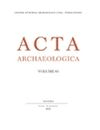
ACTA ARCHAEOLOGICA
Pioneering Discoveries in the World of ArchaeologyACTA ARCHAEOLOGICA is a highly regarded, peer-reviewed journal published by BRILL, focusing on the dynamic field of archaeology. With an ISSN of 0065-101X and an E-ISSN of 1600-0390, this journal disseminates innovative research, critical analyses, and comprehensive reviews that contribute to our understanding of human history, cultural heritage, and archaeological methodology. ACTA ARCHAEOLOGICA has excelled in its field, achieving a Q1 ranking in both the Arts and Humanities and Social Sciences categories for 2023, showcasing its impact and relevance in scholarly discourse. Though not currently open access, the journal caters to a diverse audience of researchers, professionals, and students, offering invaluable insights into archaeological studies from a global perspective. As it continues to foster academic dialogue, ACTA ARCHAEOLOGICA remains a cornerstone for those looking to deepen their knowledge and engage with cutting-edge archaeological research.

Time & Mind-The Journal of Archaeology Consciousness and Culture
Investigating the Interplay of Time, Culture, and CognitionTime & Mind - The Journal of Archaeology Consciousness and Culture, published by Routledge Journals, Taylor & Francis Ltd, stands at the intersection of archaeology and consciousness studies, revealing the intricate relationship between cultural practices and human cognition. With a robust ISSN of 1751-696X and an E-ISSN of 1751-6978, this esteemed journal plays a vital role in fostering interdisciplinary dialogue among scholars in the realms of anthropology and archaeology. Notably recognized for its rigorous academic standards, it achieved a commendable Q2 category ranking across various fields in 2023, including Anthropology and Archeology, alongside impressive Scopus rankings. As it continues to publish cutting-edge research from 2008 to 2024, this journal remains dedicated to exploring the nuances of human experience through the lens of archaeological evidence, making it an indispensable resource for researchers, professionals, and students alike seeking to deepen their understanding of the cultural dimensions of consciousness.